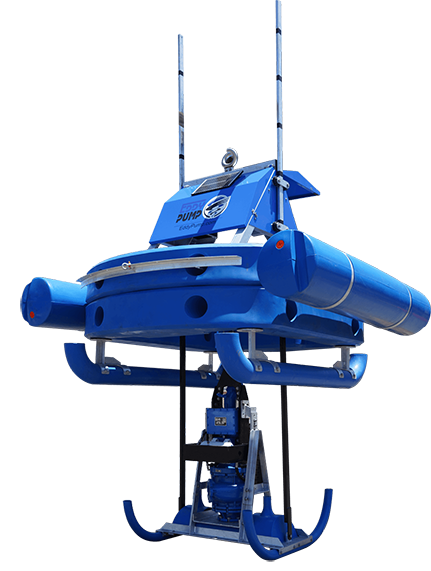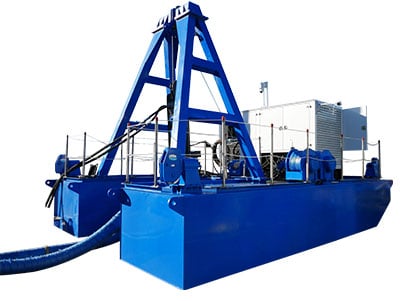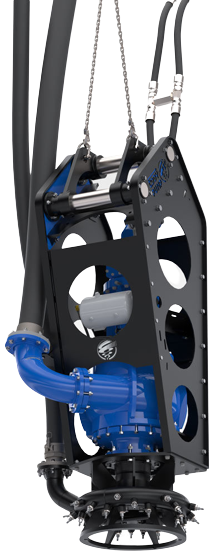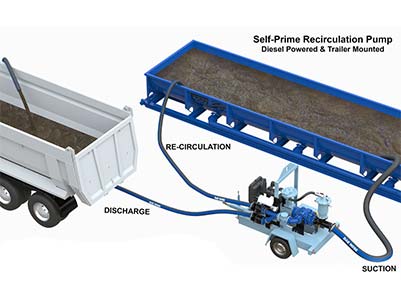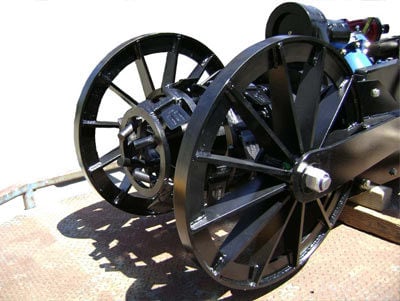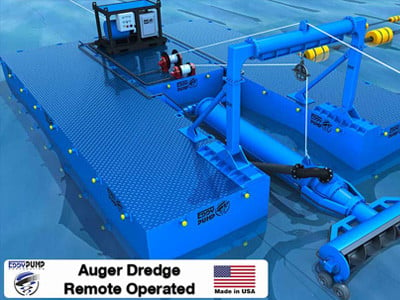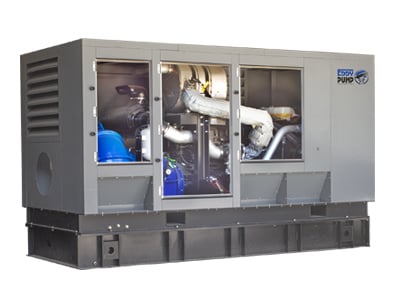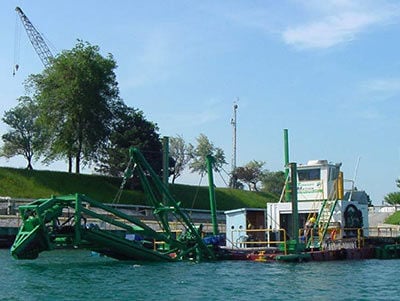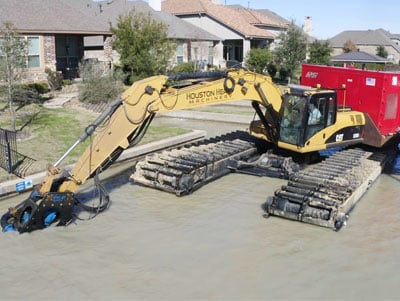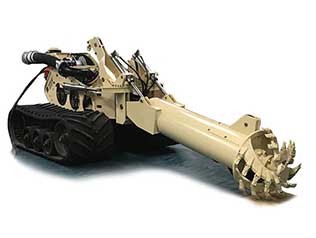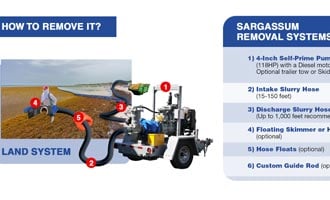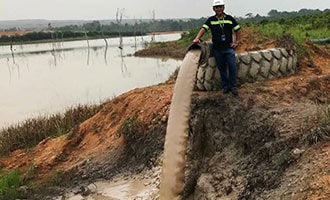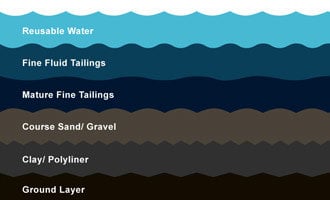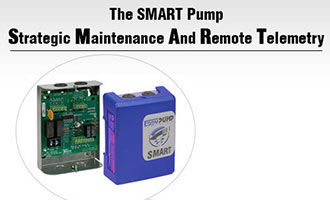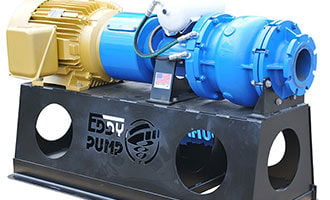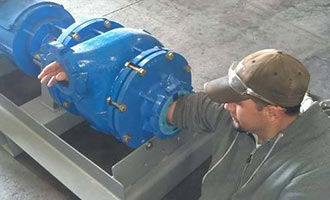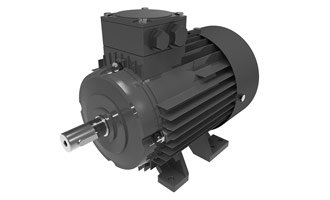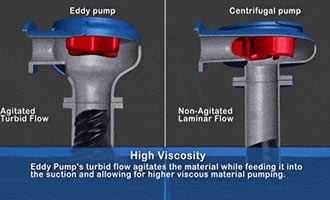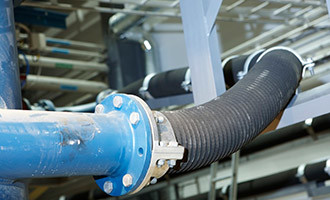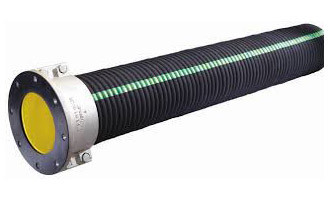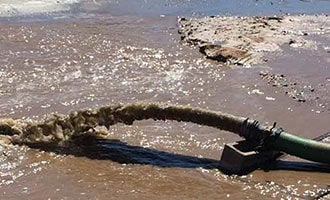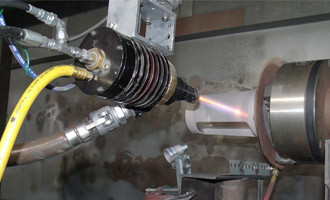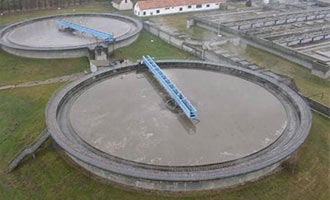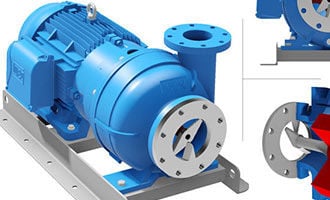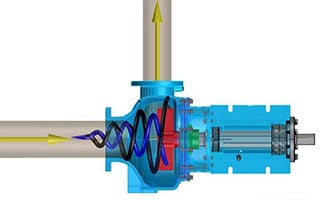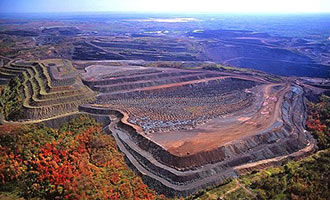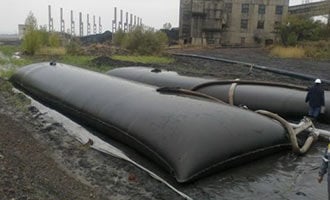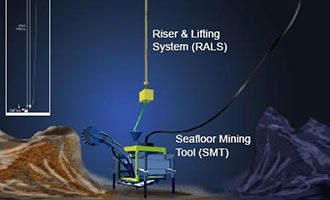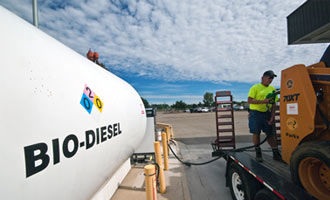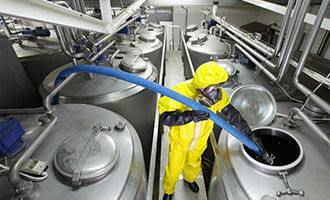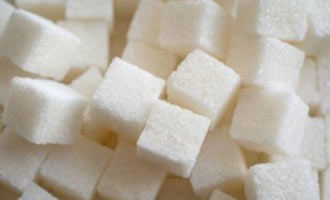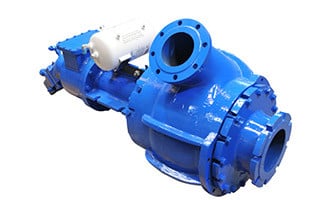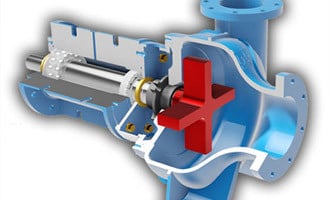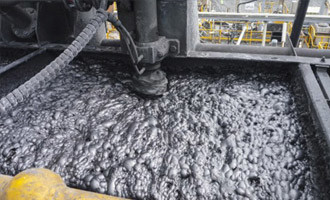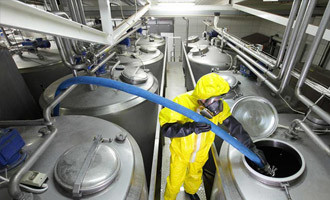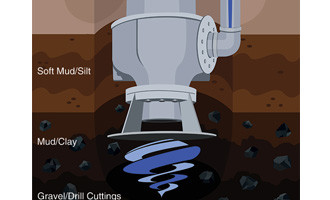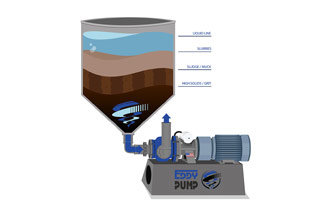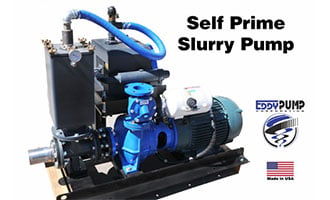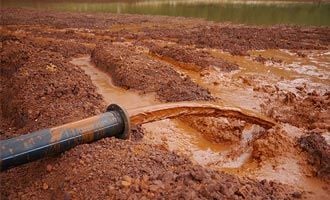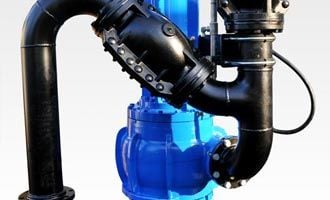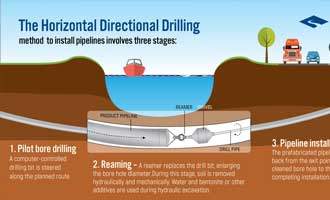Dredging Equipment

Excavator Pump Attachment
Attach to an Excavator and Start Dredging
The excavator-mounted dredge pump attachment improves the process for pumping high solids while being able to use the hydraulic power of your existing excavator. The EDDY Pump Excavator Attachment quickly pins into your existing bucket linkage and large excavators can be fitted with up to a 12-inch pump.
Dredge Sled
Pond and Lagoon Dredging Equipment
The patented Dredge Sled lagoon dredge pump is highly engineered for submersible dredging with the autonomous ability to gently slide along the bottom to pump highly viscous or abrasive material, sludge, muck, paste, high solids, and other harsh lagoon pumping applications.
Self-Priming Pumps
Trailer or Skid Mounted Options
Most EDDY Pumps are submersible; however, with a self-priming unit, the pump and power unit are not submerged. The suction hose goes into the slurry, making the unit like a super-sized wet vacuum. This unit can be mounted to a trailer or skid for easier mobility.
Remote-Operated Trailer Boom Pump
Control Your Boom Operations Remotely
Welcome to EDDY Pump’s Remote-Operated Trailer Boom Pump, the innovative solution for efficient and versatile concrete pumping operations. With wireless remote control for boom operations, this advanced concrete pump offers unmatched convenience, precision, and safety.
Diver Operated Dredge Pump
Underwater Diver Controls Pump’s Intake Hose
Our Diver Operated Dredge design is easily mobilized and designed for pumping production rates of 75 to 150 cubic yards of material per hour. This while pumping a higher solids content and not clogging like conventional pumps.
Autonomous Dredge
Remote Operated Dredging Platform
EDDY Autonomous Dredge System is a remote operated and unmanned dredging platform. The onboard dredging equipment can move slurry, sludge and high solids up to 4000 GPM at over 400 ft of head. With a footprint of only 650 sq. ft. by anchoring 3 to 4 cables on land, the system can effectively dredge a large area without any onboard crew.
Cable-Deployed Dredge Pump
Combine With a Water Jetting Ring to Break Up Consolidated Material
EDDY Pump’s submersible electric and hydraulic driven dredge pump, with water jetting ring agitator option, is a market leader in high solids pumping. Unlike other dredge pumps, the EDDY Pump design does not have an impeller, but instead a heavy duty geometrically designed rotor that creates a synchronized eddy current similar to a tornado.
The EDDY Self-Priming Slurry Mixing and Transfer Pump incorporates a vacuum-assisted priming slurry pump, a slurry container, a suction/discharge hose, and a recirculation hose. This unit will continually mix slurry within a slurry storage container, keeping it from settling, allowing for easy slurry transfers to a truck or another disposal means.
Remove sediment from your poly or concrete-lined retention ponds without worry of damaging the delicate liner. We have fully customized pumping options for clay, plastic, poly and concrete lined ponds. Deploy via barge, excavator or submersible.
Auger Suction Dredges are used in many dredging applications where there is a liner such as poly, clay, concrete, and other type of plastic liners. The Auger Suction Dredge can be equipped with wheels to provide liner-safe dredging while still being able to break up consolidated material.
Booster Pumps bolster the effectiveness of the main pumps by allowing you to pump material at long distances without the risk of losing critical line velocity or downstream. For pumping long distances, often times booster pumps are needed to facilitate the material transfer.
The EDDY Environmental Dredge is designed to be the most precise dredge available, built to only remove the target material and not over-dredge unwanted material from the ecosystem. This, in turn lowers the cost and time of contaminant material treatment and the overall dredging project.
Amphibious Excavators are perfect for hard to reach marsh, swamp and shallow water dredging projects. Pontoon undercarriages also called amphibious undercarriage make this possible. Change out the factory excavator undercarriage with a floating amphibious undercarriage and dredge further.
The Subdredge is a remote operated submersible dredge (ROV) that can be powered hydraulically or electrically with pump sizes ranging from 4-inch up to 10-inch with production rates of up to 4500 GPM or 400 cubic yards of material per hour.
The Self-Priming Excavator Pump & Bucket is a design that features all of the benefits of the EDDY Pump Excavator Pump Attachment within a traditional rugged excavator digging bucket. This design allows higher production in hard digging environments, utilizing the true digging power of the excavator and bucket teeth.
The EDDY Pump Hydraulic Sargassum Removal Attachment (HSRA) is a groundbreaking patented solution for efficiently managing sargassum seaweed in coastal areas. Designed to revolutionize sargassum cleanup operations, the HSRA can be seamlessly attached to small workboats or excavators, empowering you to combat the sargassum influx easily.
EDDY Pump has been bringing new innovative solutions to the aging dredge industry since 1984. Building on our popular slurry agitation dredge technology, we are one of the few companies who manufactures both our pumps and dredging equipment to ensure optimal support.
EDDY Pump is a Dredge Manufacturer – Rent or Buy Dredging Equipment Shown.
EDDY Pump is a Dredge Manufacturer, we build dredges and pumps. In harsh conditions with sand, sludge, rocks, slurry, normal dredge pumps clog, wear and fail more often. These scenarios inevitably lead to downtime for pump maintenance, hurting your bottom line. This is not the case with The EDDY Pump since we have the tolerance to pump solid objects up to 11 inches!
How? The EDDY Pump’s open rotor design with no critical tolerances will allow anything that will go into the intake to be passed through the discharge without issues. Tolerance between the rotor and the volute in the 4″ EDDY Pump easily allows the passage of a man’s arm, while the tolerance in a centrifugal pump is significantly less. In a 2-inch to 12-inch EDDY Pump, the tolerance ranges from 1-11 inches.
This translates to a significant amount of solids and material pass through, all without clogging the pump. To learn more about the technology behind our pumps continue reading more HERE.
ALL of our EDDY Dredge Equipment uses our industry-leading non-clog Slurry Pumps designed for high solids pumping applications. Our non-clog slurry pump outperforms all centrifugal, vortex and positive displacement pumps in a variety of the most difficult pumping applications and is used to power all of our dredges. More information about our pump technology.
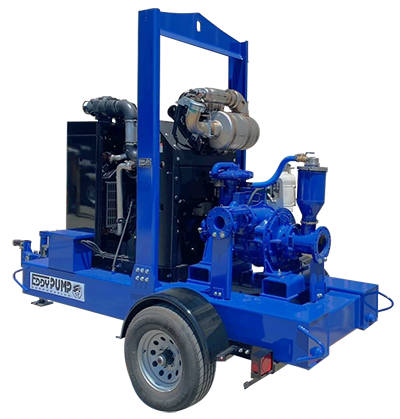
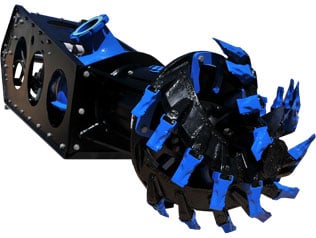
Best Applications: If you are pumping high solids, slurry, extremely viscous material, high abrasives, coal ash (sand, grit & gravel) and material filled with solids, then you found the ideal pump and dredging equipment for your job. Call or message for selection help.
Industries Most Served: Mining, Oil and Fracking, Waste Water, Paper/Pulp, Chemical, Energy, Water Districts, Irrigation Districts and Dredging Companies.
Best Applications: If you are pumping high solids, slurry, extremely viscous material, high abrasives, coal ash (sand, grit & gravel) and material filled with solids, then you found the ideal pump for your job. Call or message for selection help.
Industries Most Served: Mining, Oil and Fracking, Waste Water, Paper/Pulp, Chemical, Energy, Water Districts, Irrigation Districts and Dredging Companies.
Specialty Dredge Equipment Features and Benefits
EDDY Pump Advantages
- Non-Clog, High Viscosity, High Specific Gravity, High Abrasives, Low pH Pumping Design
- 40-70% Solids Pumping by Volume
- Ability to pump objects of up to 11-inches in diameter
- 100% American Built
- State-of-the-Art Research and Development Facilities on site
- Easily process rags, string, rocks and foreign objects
Dredge Equipment Config Options
- Numerous Dredge and Pump Configurations
- Customizable Dredges and Pump Systems
- Electric, Hydraulic Driven or Diesel Driven
- Various Cutterhead Options
- Remote Operation Capability
- GPS / RTK Precise Positioning and Dredging
- Liner-Safe Operation (Clay, Poly, Concrete, etc)
- Environmentally Safe
- Low to No Turbidity
- Easy to Ship and Assemble Worldwide
- Self-Priming Systems Available
Dredge Equipment Rentals and Sales
Call 619-404-1916
Dredging Equipment FAQs
What is dredging equipment?
Dredging equipment refers to specialized machinery and tools used for excavating, removing, and transporting sediment, silt, or debris from bodies of water. It includes various dredges, pumps, pipelines, and ancillary support equipment.
What are the main types of dredging equipment?
The main types of dredging equipment include:
- Cutter suction dredges
- Submersible dredge pumps
- Excavator dredges
- Hydraulic dredges
- Dragline dredges
- Clamshell dredges
How does dredging equipment work?
Dredging equipment works by mechanically excavating sediment from underwater environments or using hydraulic forces such as water pressure or suction to dislodge and transport sediment. The dredged material is transported via pipelines or barges to a designated disposal site or processing facility.
What is the purpose of dredging equipment?
The purpose of dredging equipment is to maintain navigable waterways, improve water quality, prevent flooding, restore aquatic habitats, reclaim land, support marine construction projects, and facilitate sediment removal in various industrial and environmental applications.
What factors should be considered when selecting dredging equipment?
Factors to consider when selecting dredging equipment include the type of sediment, dredging depth, required production rate, operating conditions, environmental regulations, project budget, and accessibility of the dredging site.
What are the advantages of using specialized dredging equipment?
Advantages of using specialized dredging equipment include:
- Efficient removal of sediment, silt, or debris
- Ability to operate in various water depths and conditions
- Flexibility to adapt to different types of dredging projects
- Minimized environmental impact compared to manual or conventional methods
- Improved safety for personnel involved in dredging operations.
What are the environmental considerations when using dredging equipment?
Environmental considerations when using dredging equipment include potential impacts on water quality, sediment disturbance, disruption to aquatic habitats, marine life effects, and environmental regulation compliance. Proper planning and mitigation measures are essential to minimize ecological impact.
What maintenance is required for dredging equipment?
Dredging equipment maintenance typically includes regular inspection, lubrication, cleaning, and replacing worn parts such as dredge pumps, cutter heads, and hydraulic components. Proper maintenance helps ensure optimal performance and longevity of the equipment.
How is dredging equipment transported to the dredging site?
Dredging equipment is transported to the dredging site using various methods, such as trucks, trailers, barges, or specialized vessels, depending on the size and type of equipment. Transport logistics are carefully planned to ensure safe and efficient delivery to the site.
What are the safety considerations when operating dredging equipment?
Safety considerations when operating dredging equipment include proper personnel training, adherence to safety protocols and regulations, use of personal protective equipment, regular equipment inspections, and implementation of emergency response plans to mitigate potential hazards.
How much does a new dredge cost?
The cost of a new dredge varies depending on factors such as size, capacity, features, and manufacturer. For larger, more complex dredging equipment, prices range from tens of thousands to millions.
How much does dredging cost?
Dredging costs vary depending on factors such as the volume of material, dredging depth, type of sediment, location, equipment used, disposal method, and regulatory requirements. Project costs can range from thousands to millions of dollars.
What is the cost of dredging in India?
The cost of dredging in India varies depending on project specifics such as location, type of sediment, dredging method, and regulatory requirements. For dredging projects in Indian waters, costs can range from a few hundred thousand to several million dollars.
What is the cost of dredger ships?
The cost of dredger ships varies depending on factors such as size, capacity, features, condition, and manufacturer. Prices for new or used dredger ships can range from several hundred thousand to tens of millions of dollars.
Which is the best dredger company?
The best dredger company depends on individual project requirements, budget, and specific needs. Several reputable dredger companies specialize in manufacturing and supplying dredging equipment, each with strengths and capabilities.
Is dredging cost-effective?
Dredging can be cost-effective when properly planned and executed to achieve specific project objectives such as maintaining navigable waterways, preventing flooding, restoring ecosystems, or supporting construction projects. However, costs can vary depending on project complexity, environmental considerations, and regulatory requirements.
What is the future of dredging?
The future of dredging will likely involve technological advancements, automation, and sustainable practices to improve efficiency, reduce environmental impact, and address emerging challenges such as sea level rise, sediment management, and coastal protection.
What are the disadvantages of dredging?
Dredging can have environmental impacts, such as habitat disturbance, sediment dispersion, and disruption to marine ecosystems. Other drawbacks may include high costs, regulatory challenges, and potential stakeholder conflicts.
What are the risks of dredging?
Risks of dredging can include equipment malfunctions, accidents, environmental damage, sediment contamination, regulatory violations, and unforeseen challenges such as adverse weather conditions or unexpected sediment characteristics.
How long does dredging last?
The duration of dredging projects varies depending on project size, scope, complexity, and environmental conditions. Dredging projects can range from short-term maintenance dredging operations lasting weeks to large-scale capital dredging projects spanning several months or years.
Is dredging bad for the ocean?
Dredging can have positive and negative impacts on the ocean, depending on how it is conducted and managed. While dredging is necessary for maintaining navigable waterways and supporting various industries, improper dredging practices can lead to habitat destruction, sedimentation, and other environmental concerns.
What are three reasons for dredging?
Three common reasons for dredging include:
- Maintaining navigable waterways for shipping and maritime traffic
- Preventing flooding by improving drainage and water flow
- Restoring aquatic habitats and ecosystems by removing sediment and debris.

